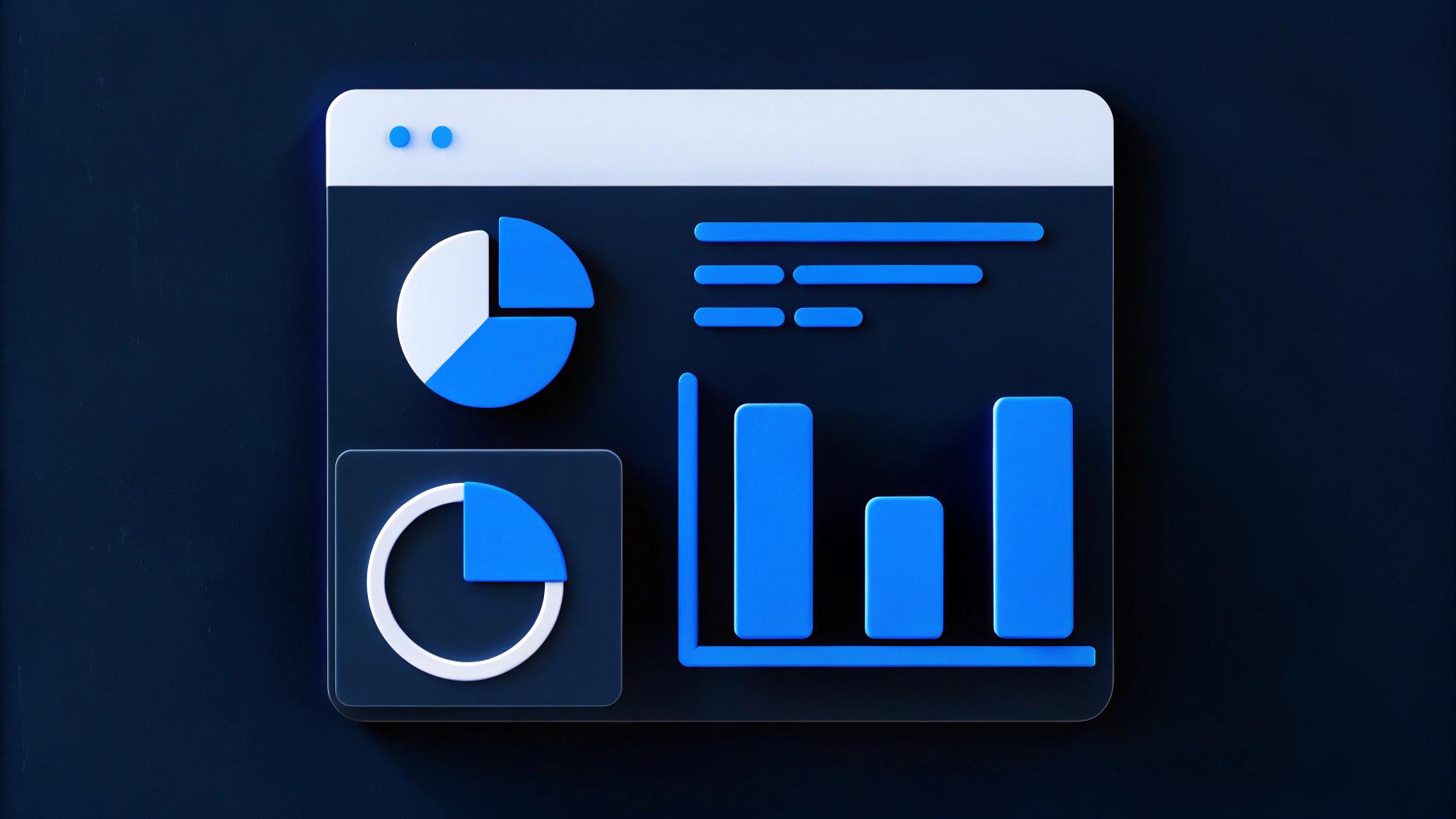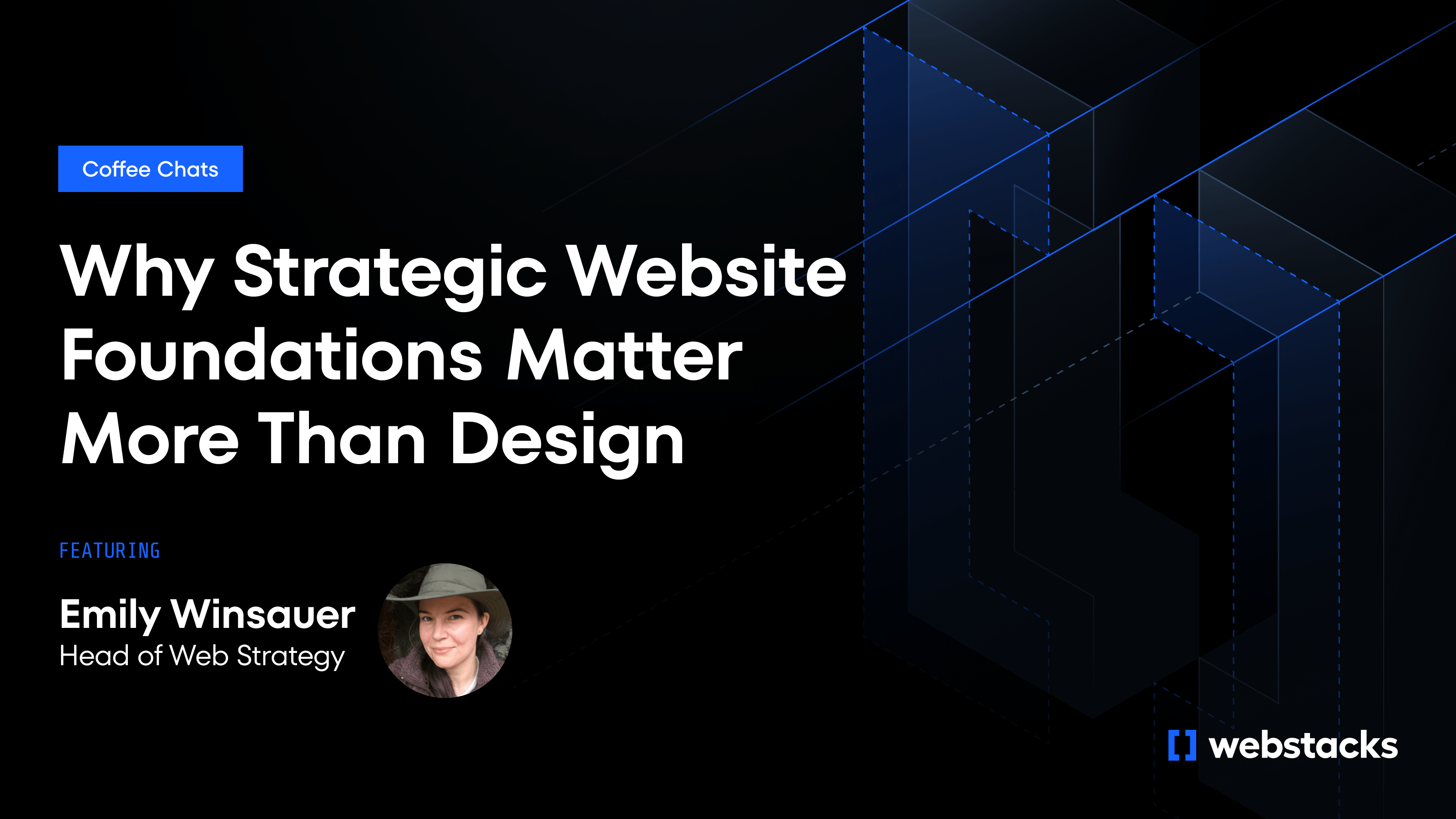When traffic climbs but forms stay empty, or a redesign lifts conversions but tanks rankings, you're seeing the fallout of misaligned SEO and CRO teams. One team focuses on acquisition, the other on activation, but without shared goals and guardrails, they end up working against each other.
Growth-stage tech companies feel this friction sooner than most. With finite budgets and high revenue targets, even small drops in search visibility or conversion rates have outsized impact. A slow-loading page, mismatched messaging, or poor mobile experience can erode both pipeline and search performance. At Webstacks, we've seen countless companies struggle with this challenge—which is why we help growth-stage teams build websites that balance SEO performance with conversion optimization from day one.
This five-step framework helps you align both sides of the funnel. You'll learn how to identify where traffic and conversions disconnect, prioritize fixes that impact both channels, optimize shared performance levers, validate improvements safely, and track everything with unified metrics.

Diagnose Traffic-to-Pipeline Disconnects
The first step is identifying where your traffic and conversions are misaligned. You need to find pages that get lots of visitors but few conversions, pages that convert well but get little traffic, and instances where search intent doesn't match your conversion offers.
Find Your Performance Gaps
Start by identifying the specific pages where traffic and conversions are most misaligned, giving you clear targets for optimization.
In Google Analytics 4:
- Go to Reports → Explore → Create a new exploration
- Add dimensions: Landing Page, Source/Medium
- Add metrics: Sessions, Conversions (your primary goal)
- Filter to show only Organic Search traffic from the last 30 days
Create two reports:
- High Traffic, Low Conversions: Pages with 1,000+ sessions converting under 1%
- High Conversions, Low Traffic: Pages with 5%+ conversion rates but fewer than 200 sessions
Map Search Intent to Conversion Actions
Beyond traffic volume and conversion rates, you need to understand whether your pages match what searchers actually want to accomplish.
Export your top keywords from Google Search Console (Performance → Queries, last 90 days). For each keyword, identify:
- Search intent type: Informational ("what is marketing automation"), Navigational ("HubSpot pricing"), or Transactional ("best CRM for small business")
- Current landing page and call-to-action
- Intent-action alignment: Does the page offer what the searcher is ready to do?
Common misalignments include informational queries landing on pricing pages, or transactional queries hitting generic overview content.
Example diagnosis: A SaaS company finds that their pricing page gets 5,000 monthly visits but only 50 demo requests (1% conversion), while a specific use-case landing page converts 15% of visitors but only gets 150 visits per month. Additionally, "marketing automation ROI" (informational intent) leads to their pricing page instead of educational content.
2. Prioritize Optimization Opportunities
Now that you've identified both performance gaps and intent mismatches, create a unified optimization backlog that addresses your highest-impact opportunities first.
Create a shared spreadsheet with columns for:
- Page URL
- Issue Type (traffic/conversion gap + intent mismatch severity)
- Current Performance (sessions, conversion rate, keyword volume)
- Revenue Impact (potential pipeline dollars)
- Effort Required (low/medium/high)
- Owner and Target Metric
Prioritization Matrix
Use this framework to decide which optimization opportunities deserve immediate attention versus future consideration.
- Quick Wins: High revenue impact + low effort (intent-action mismatches with existing content)
- Strategic Bets: High revenue impact + high effort (new landing pages for high-converting keywords with low traffic)
- Maintenance: Low revenue impact + low effort (technical optimizations)
When you treat every page as a growth experiment with clear revenue potential, high-impact pages rise to the top while low-impact busywork falls away. Share this backlog with engineering, design, and marketing teams so everyone pulls from the same prioritized queue.
3. Optimize Shared Performance Levers
Instead of spreading efforts across separate SEO and CRO initiatives, focus on elements that influence both search rankings and conversion rates. These optimizations improve user experience, reduce friction, and signal quality to search engines simultaneously.
Start with the technical and content elements that serve as prerequisites for both ranking well and converting visitors effectively.
Page Speed
Google uses page speed as a ranking factor, and slow pages kill conversions. A one-second delay reduces conversions by 7% and pushes visitors back to search results. Target Core Web Vitals benchmarks: 2.5 seconds or less for Largest Contentful Paint and under 0.1 for Cumulative Layout Shift.
Quick wins: Compress images (under 100KB each), minimize tracking scripts, and implement a CDN.
Mobile Experience
Google uses mobile-first indexing, and 60%+ of B2B traffic comes from mobile devices. Ensure buttons and forms work with fingers, text is readable without zooming, and navigation is thumb-friendly.
Content-Intent Alignment
Based on your Step 1 diagnosis, fix intent mismatches by:
- Creating dedicated ROI calculators or case studies for informational queries currently hitting pricing pages
- Adding clear product details and comparison tools for navigational queries
- Strengthening calls-to-action for transactional queries ready to convert
Clear Information Hierarchy
Search engines use headings to understand page topics, and visitors scan headings to grasp value propositions quickly. Use one H1 tag per page with your main keyword, structure H2/H3 tags logically, and match headlines to the search queries that brought visitors to the page.
Tools for measurement: Google PageSpeed Insights for Core Web Vitals, Google Mobile-Friendly Test for compatibility, Hotjar for user behavior insights.

Step 4: Validate Changes Without Risk
Test conversion improvements without jeopardizing the search rankings your team worked hard to achieve.
Safe Testing Protocol
The key to successful testing is protecting your existing search performance while gathering reliable conversion data.
- Setup: Create test versions on temporary URLs (yoursite.com/test-page) with canonical tags pointing to the original page. This tells Google the test is temporary.
- Duration: Run tests for a maximum of 3 weeks on high-traffic pages to gather statistically significant data without extended ranking risk.
- Focus Areas:
- Headlines and value propositions (based on intent mismatches identified in Step 1)
- Call-to-action button text and placement
- Form length and field requirements
- Page layout and content order
- Monitor red flags: Significant drops in search impressions, slower page loading times, or increased bounce rates.
Example test: For "marketing automation ROI" traffic currently hitting your pricing page, test "Marketing Automation Software for Growing Teams" against "Calculate Your Marketing ROI in 30 Days" on a dedicated ROI-focused landing page.
Use privacy-focused A/B testing tools like Convert or Optimizely to segment organic search visitors and ensure valid results.
Step 5: Monitor Unified Performance
Your efforts only pay off when you can see traffic, engagement, and revenue impact on a single dashboard. Instead of separate SEO and CRO reports, create a unified dashboard that tracks essential metrics connecting search performance to business outcomes.
- Traffic: Organic search sessions, keyword rankings, click-through rates from search results
- Engagement: Bounce rate by traffic source, session duration, pages per session
- Conversions: Primary action conversion rate, qualified pipeline dollars from CRM
While tracking multiple metrics provides valuable insights, your north star metric should directly connect SEO and CRO efforts to revenue impact. For example:
Pipeline per 1,000 sessions = (Qualified pipeline dollars ÷ organic sessions) × 1,000
This shows whether your optimization efforts actually move revenue, not just vanity metrics. Most B2B SaaS companies should target $1,000-2,000 pipeline per 1,000 organic sessions, depending on deal size and sales cycle.
Example: Generate $20,000 in qualified pipeline from 10,000 organic sessions = $2,000 per 1,000 sessions. After improving page speed and intent alignment, increase to $2,400 per 1,000 sessions without needing more traffic.
Check the dashboard weekly to identify trends (rankings up but conversions down? traffic growing but pipeline flat?), and use your prioritized backlog to choose 1-2 pages for optimization or testing based on data.
Turn Alignment into Ongoing Practice
When you treat your website as growth infrastructure rather than a quarterly redesign project, every experiment builds on the last. Regular optimization cycles, user behavior analysis, and safe testing keep rankings and conversion paths moving in the right direction.
The compound effect creates a growth flywheel: Better engagement signals improve rankings, which brings more qualified traffic, which provides more conversion opportunities, which generates more revenue to invest in further optimization.
Most importantly, this unified optimization approach removes the reporting tug-of-war between teams. Shared dashboards and a single north star metric—pipeline per thousand sessions—keep everyone focused on revenue impact rather than channel-specific vanity metrics.
Ready to implement this framework but need technical infrastructure that supports continuous optimization? Our composable architecture eliminates the bottlenecks that typically slow down testing and iteration. Chat with our team to discover how we can help you build a website that grows with your optimization strategy.




